My co-worker Geoff Borggard bought Diazo paper (also called "whiteprint" paper, similar to blueprint paper), for experimental photography. It is sensitive to UV light, and can be developed with ammonia fumes (as from Windex).
4x5 Photos
David Rochberg, another co-worker, lent us his Crown Graphic (a 4x5 camera, so named for the 4" x 5" negatives). It makes large, detailed exposures. Geoff set up these exposures:
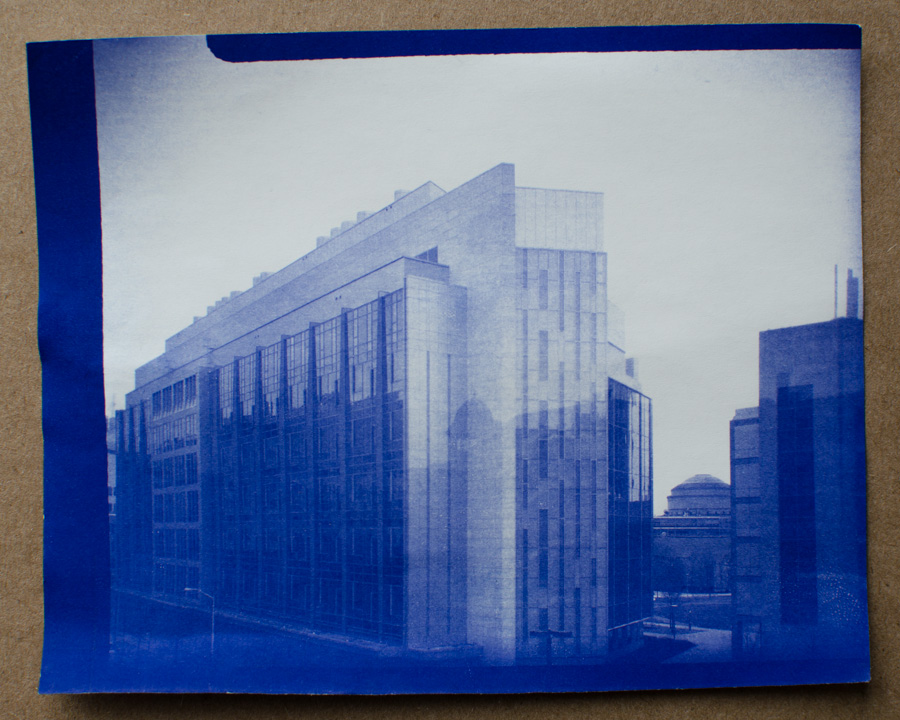
Both of them took about an hour, under overcast but bright conditions.
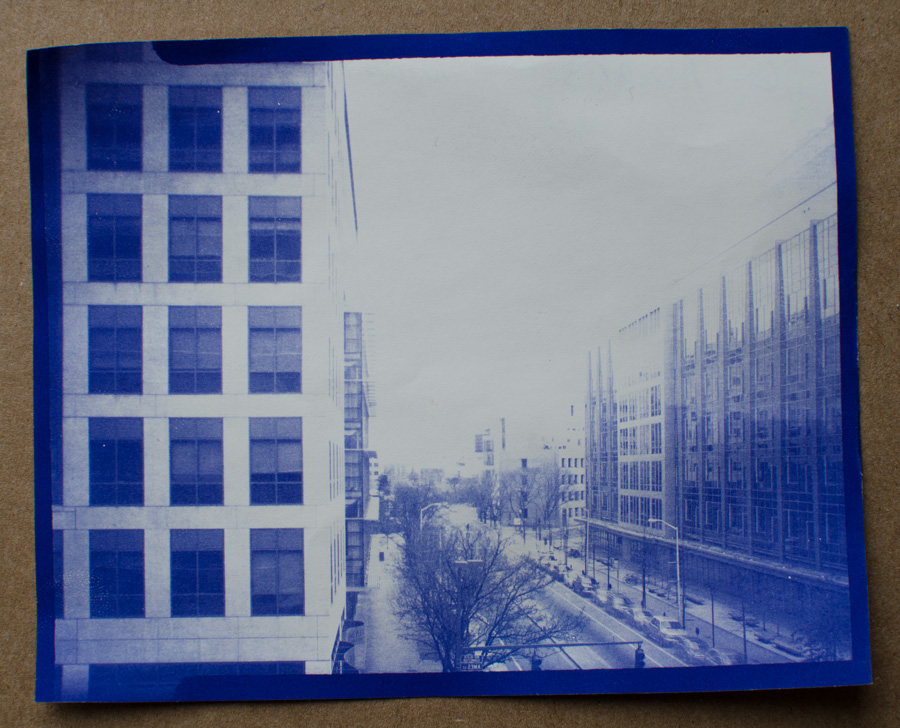
Below, the camera used to make the exposures.
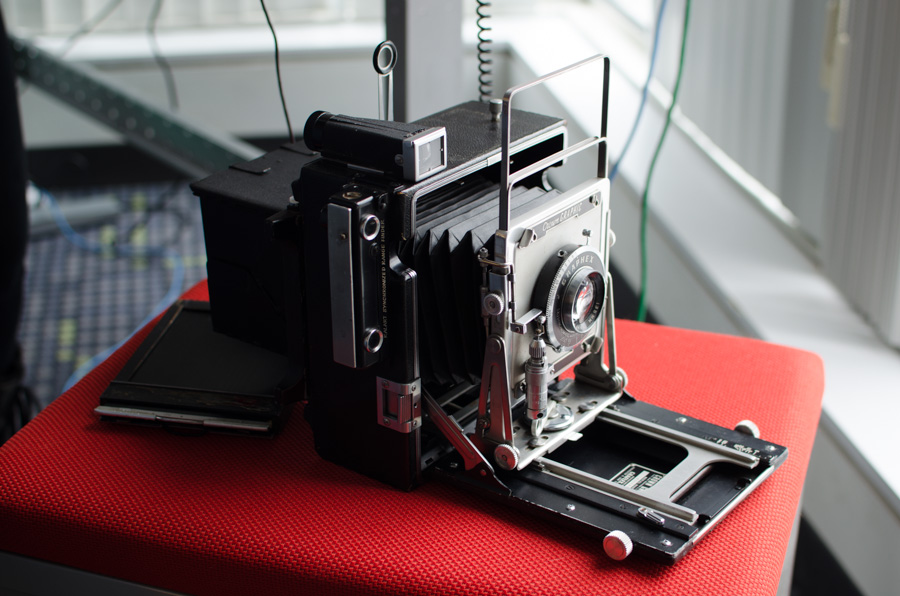
35mm Photos: Comparison
I took a number of exposures with small pices of paper in my 35mm film camera.
| Diazo paper photograph. With an f2 lens. Overcast/snowy weather, through an office window. | Digital photograph at f2 and ISO 100. |
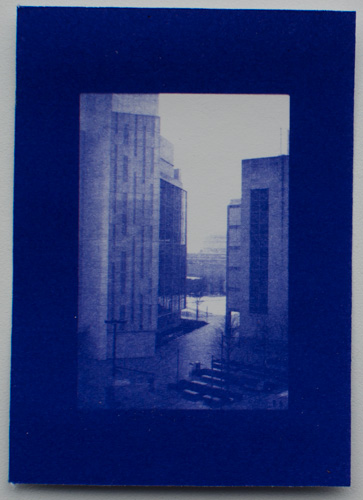
50 minutes |
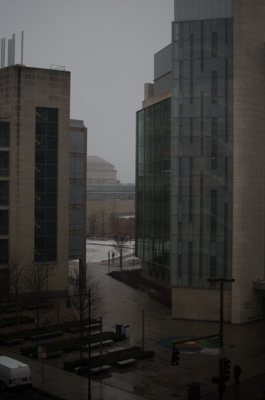
1/3200s |
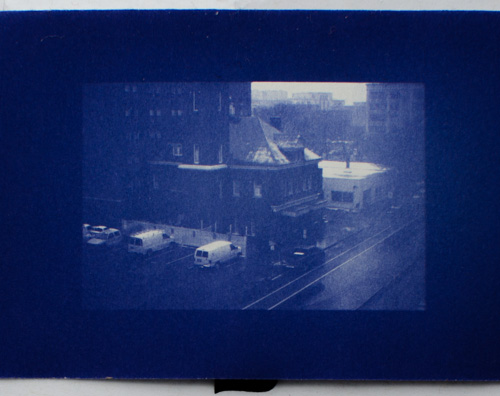
1 hour |
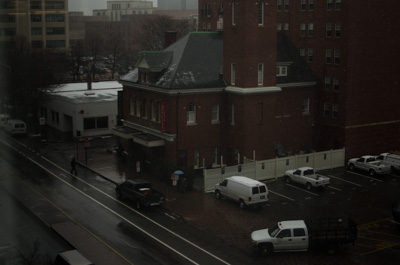
1/3200s |
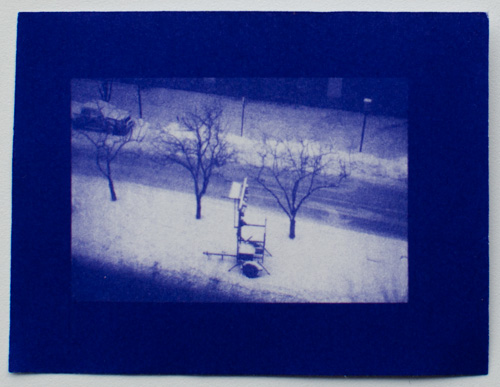
40 minutes |
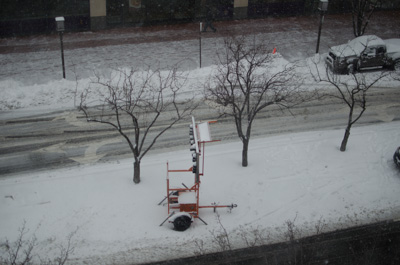
1/1600s |
The developed paper produces a positive image, although it is flipped. (Thus the name "whiteprints" for Diazo paper: blue lines on a white ground, as opposed to the white lines on a blue ground for "blueprints".)
Process
For the above images, I used my 35mm film camera, and an f2 lens.
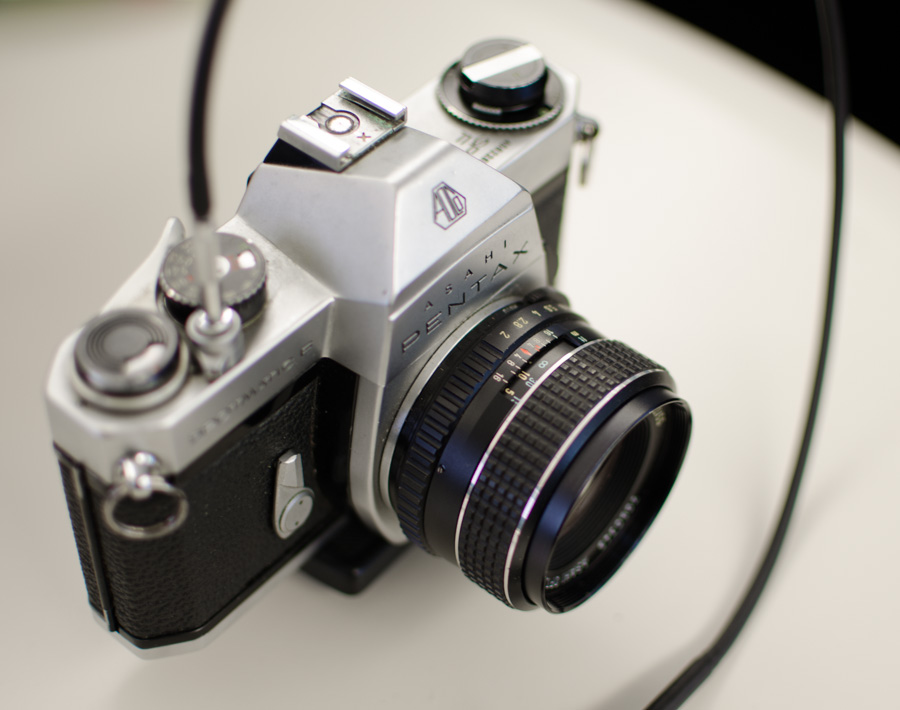
The Diazo paper is yellow when undeveloped (rectangle on camera), and the unexposed areas become dark blue when developed (top rectangle). I cut rectangles from part of one of the 18"x24" sheets, and set them into the camera. (The back presses tightly enough against the shutter housing to hold the paper in place.)
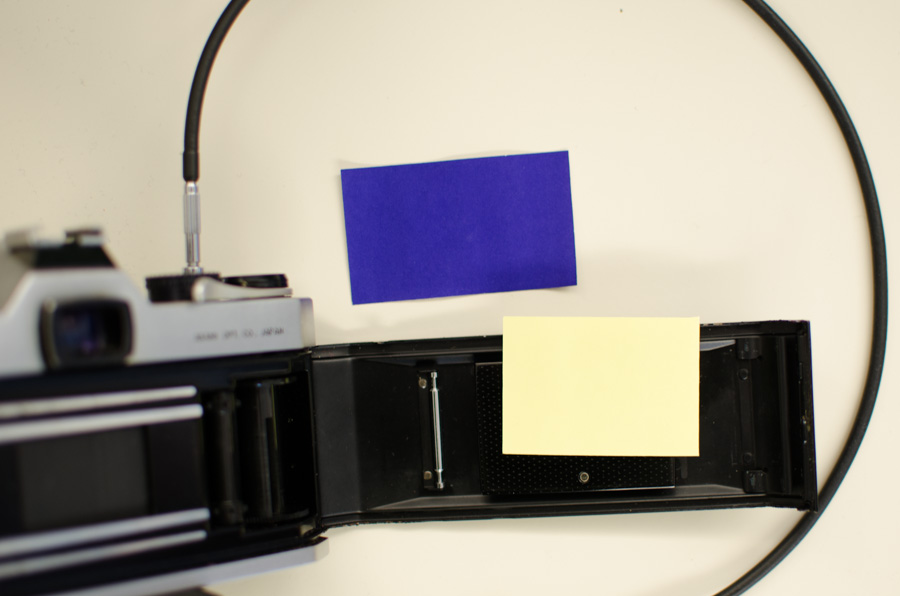
The paper develops when exposed to ammonia gas; Windex is a sufficient source.
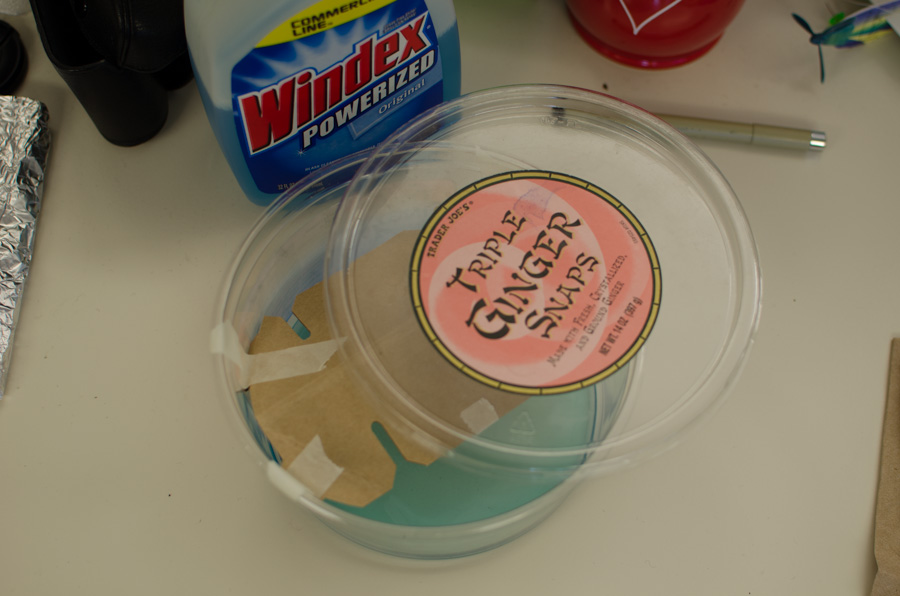
I taped a cardboard shelf into a cookie tub; I set the exposed paper on the shelf, closed the tin, and put something opaque over it to prevent further exposure; and after about 20 minutes it's ready. (Below, the exposed, white areas of the image are faintly visible on the paper. A few seconds of exposure to indoor lighting doesn't seem to damage the images.)
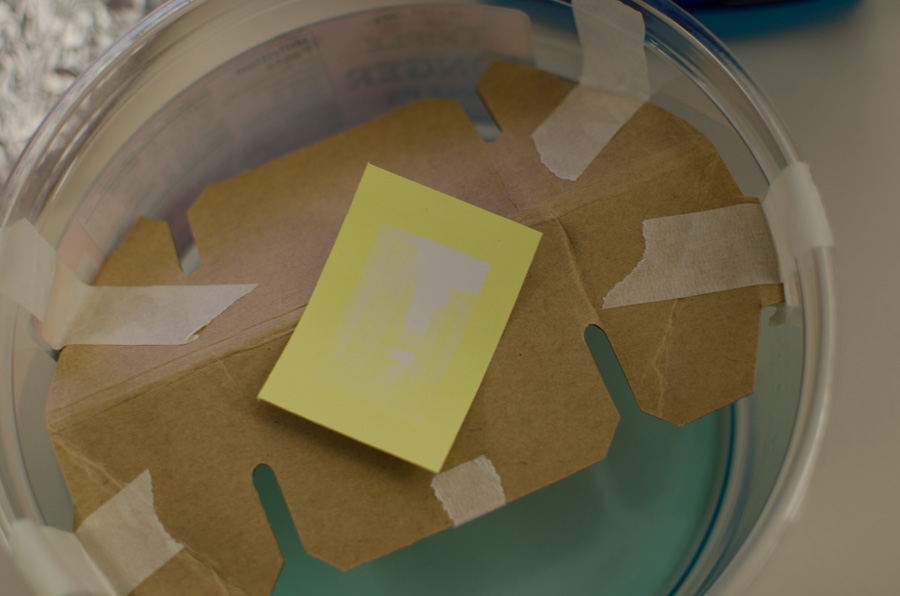
Box Camera
To make larger prints, and in the spirit of experimentation, I made a cardboard-box camera using a magnifying filter. It makes roughly letter-size exposures of good quality, like the below.
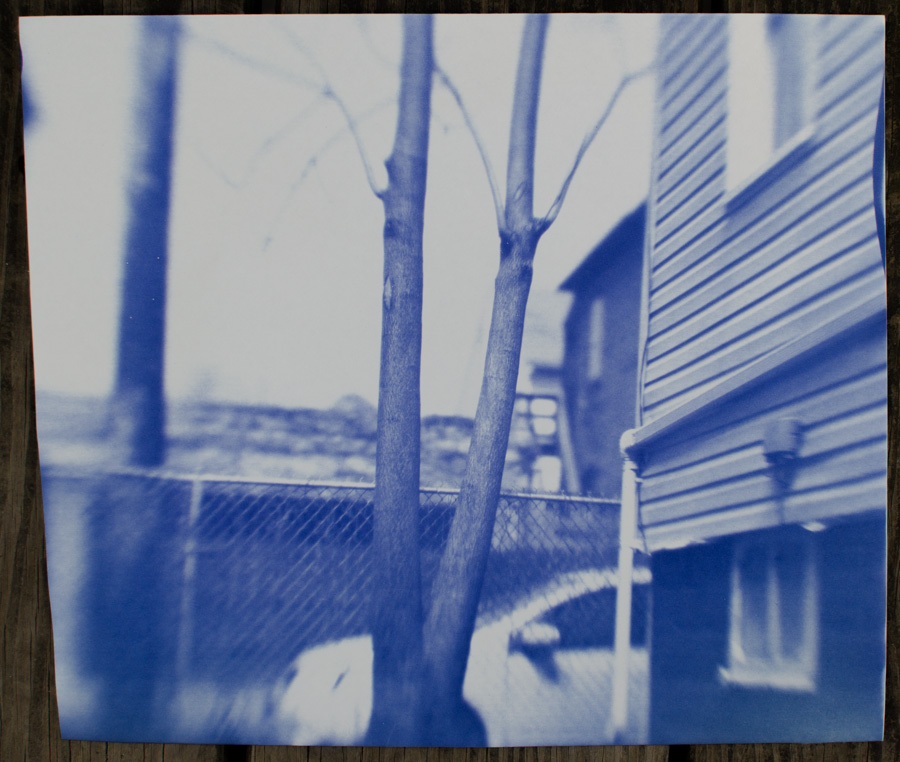
Related
- Killbox on flickr experiments with blueprint paper in pinhole cameras (many with sun trails from multi-day exposures).
- Mark Gutierrez on Instructables outlines how duplicate a photograph by contact printing onto Diazo paper.